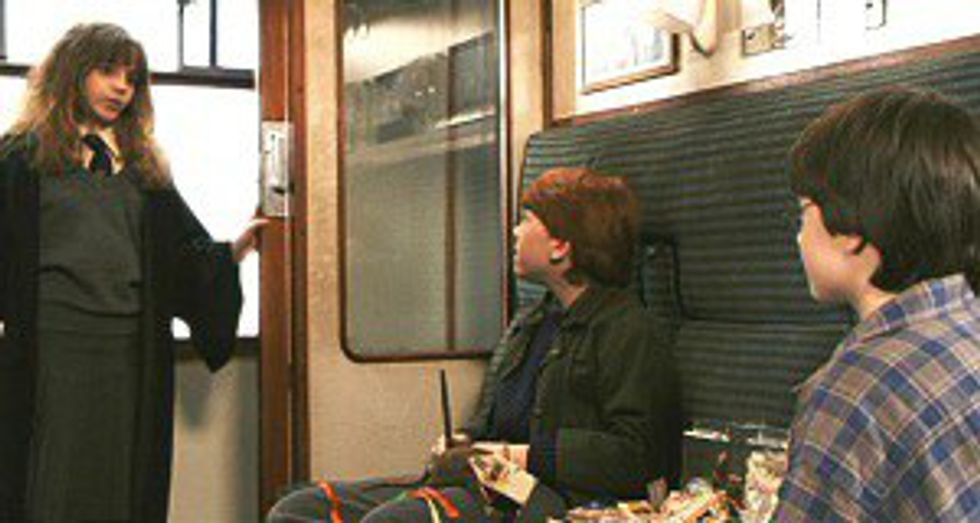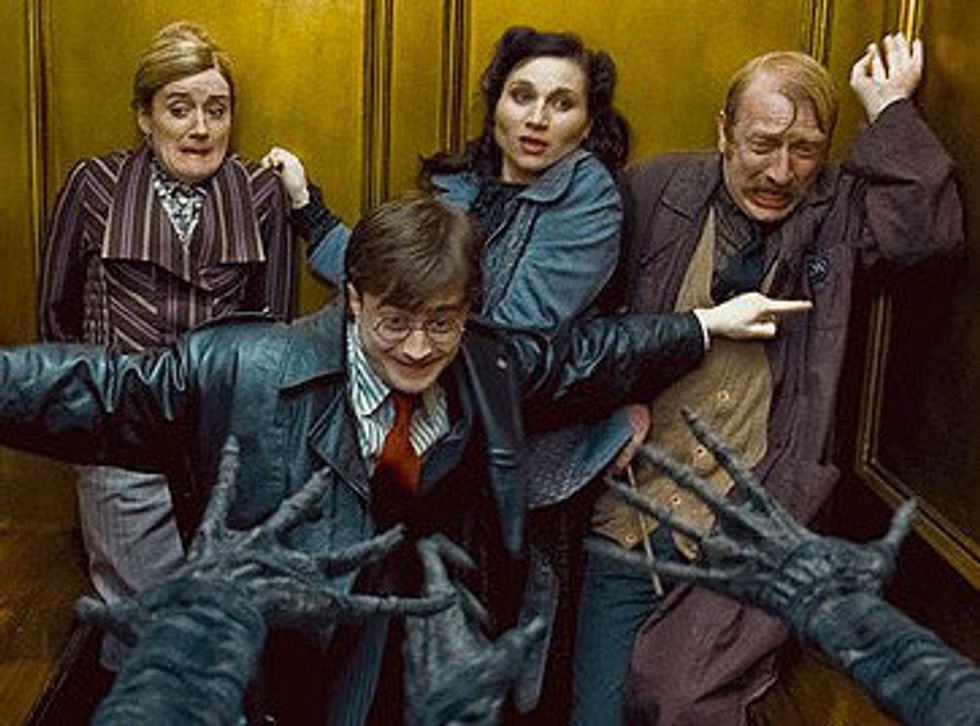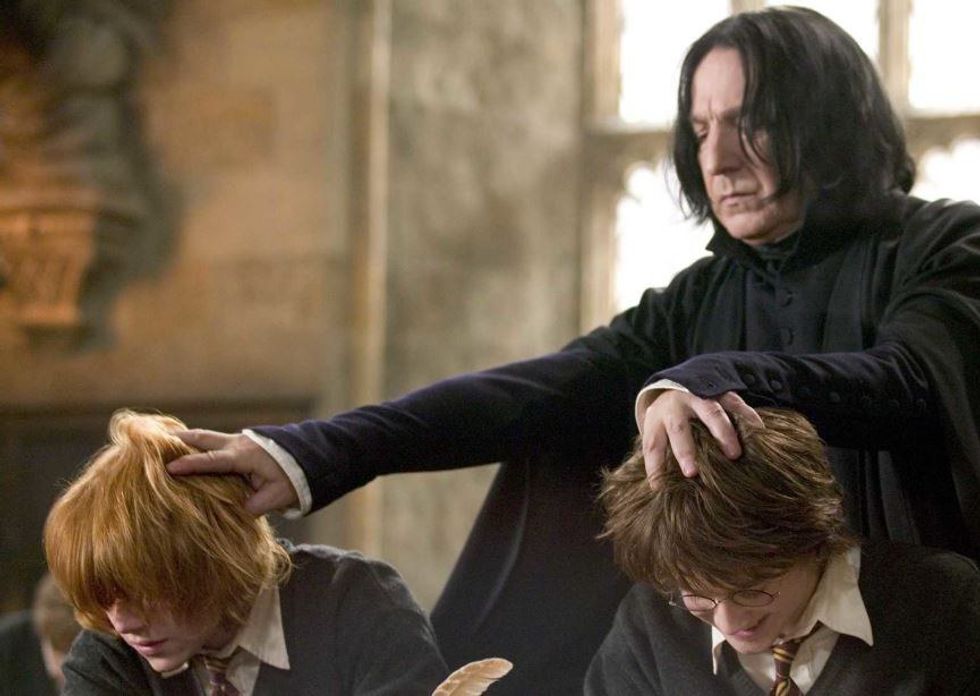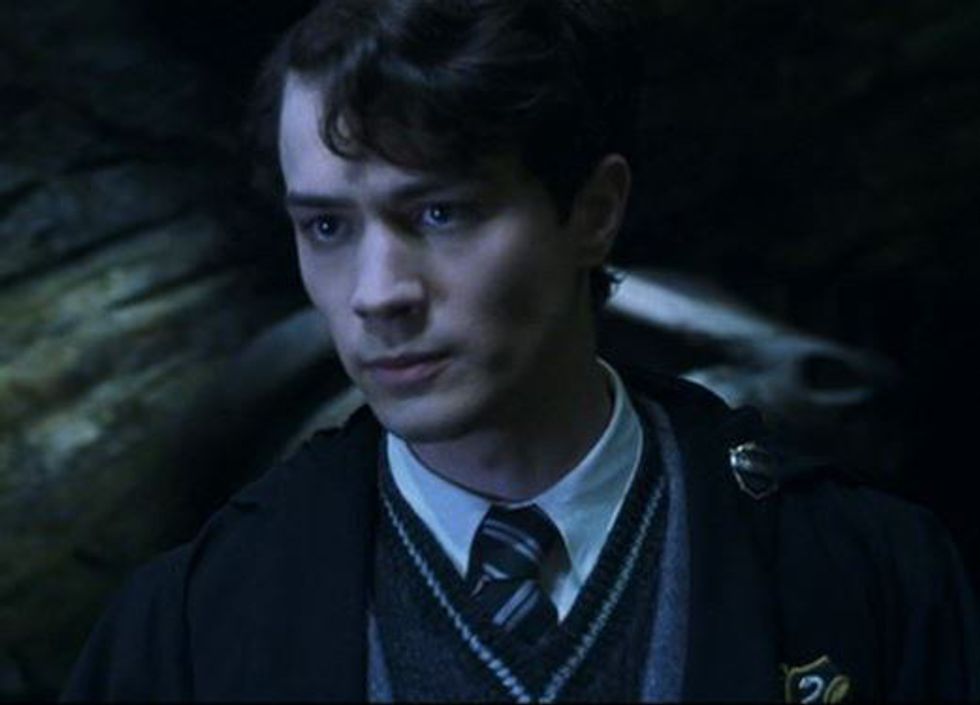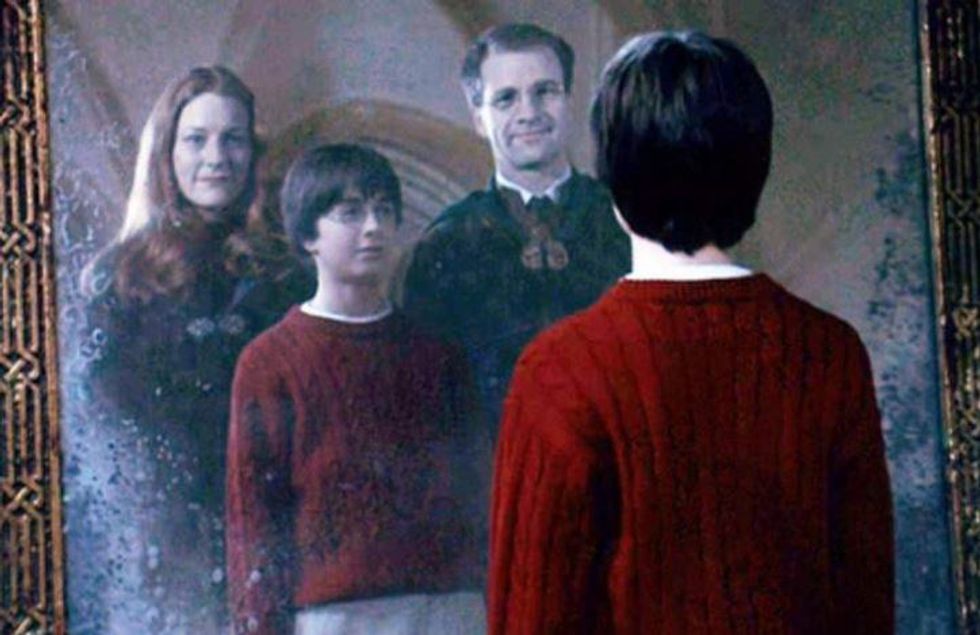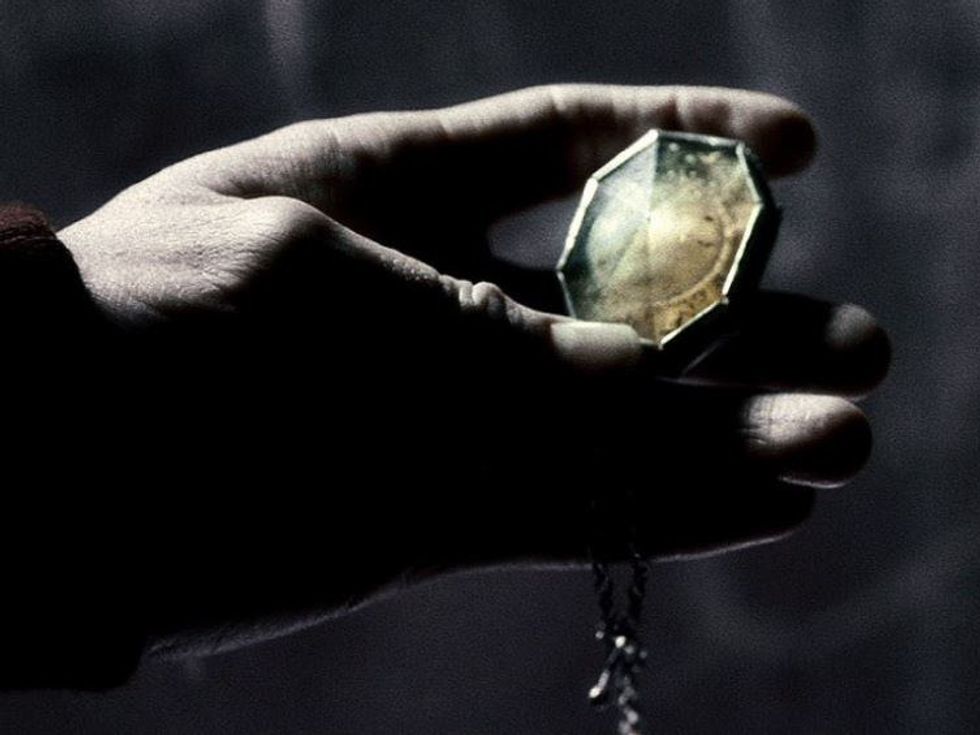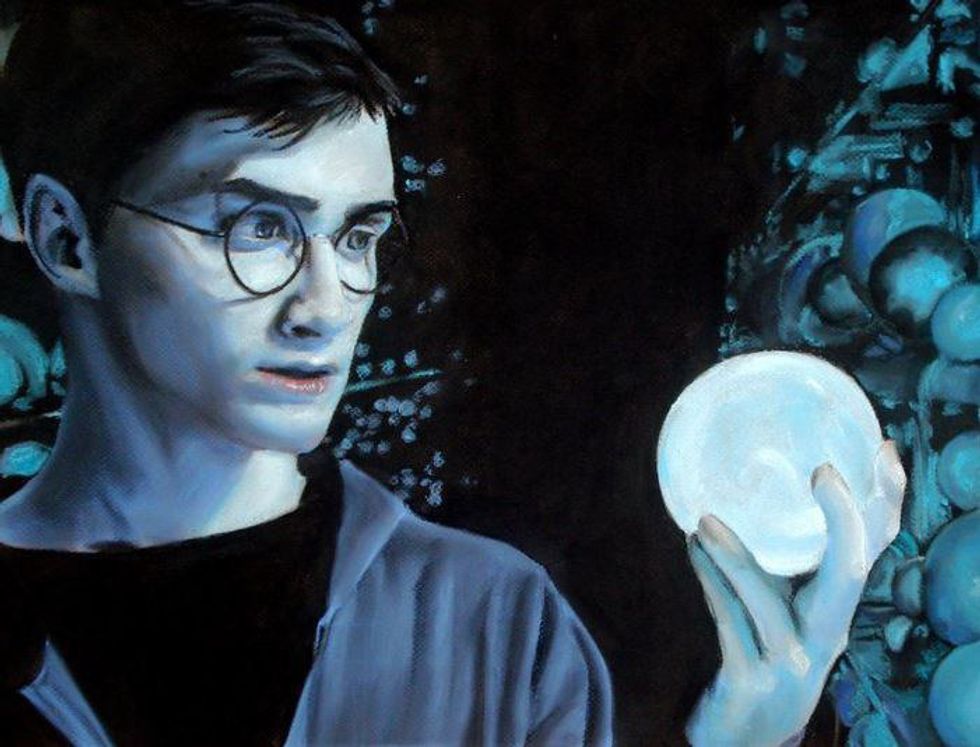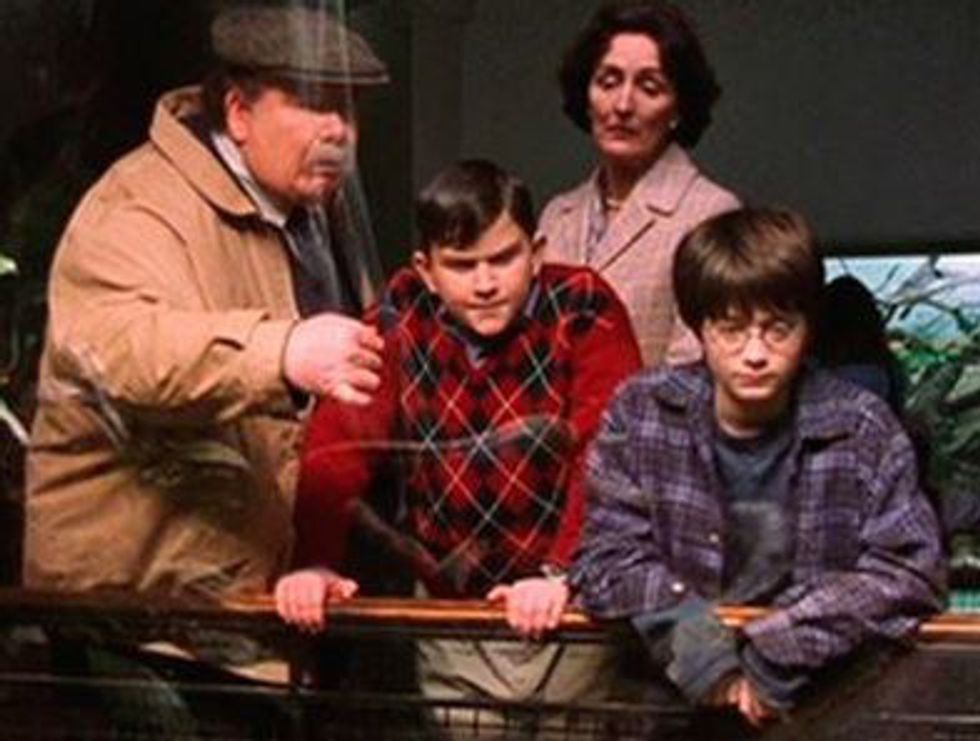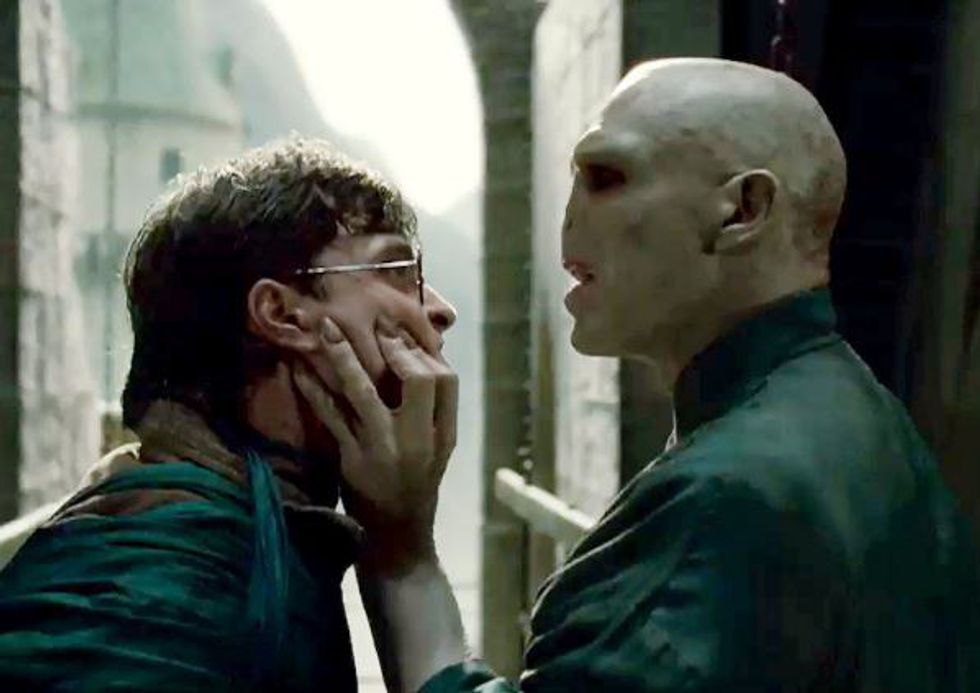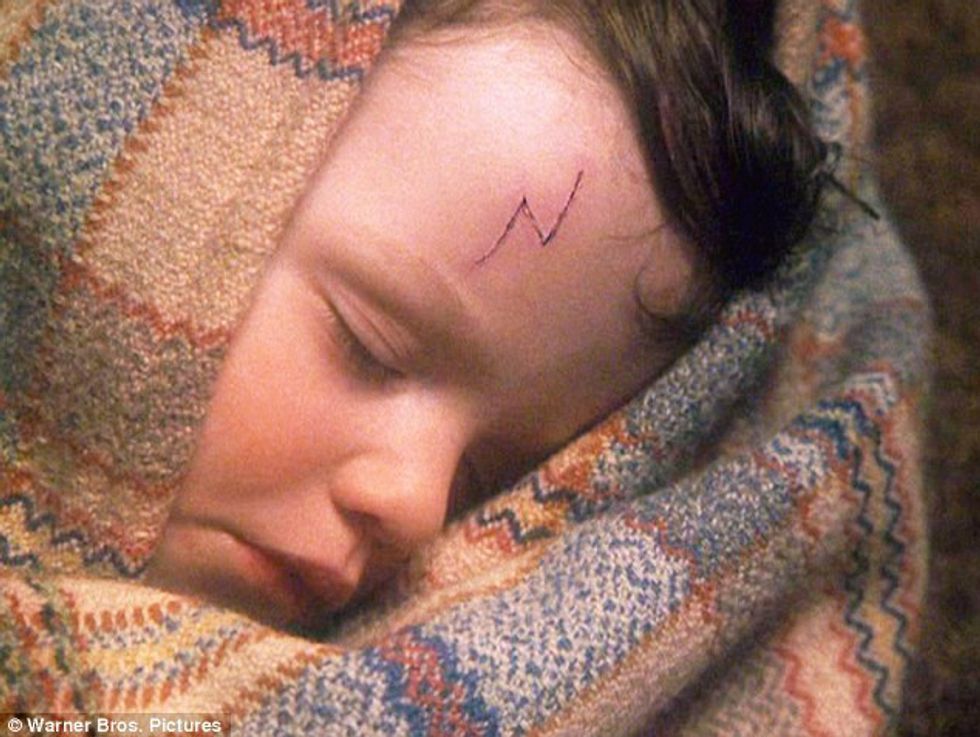One summer nine years ago I read the entire Harry Potter’s series in preparation for when I received a copy of J.K. Rowling’s (supposedly) last Harry Potter book, “Harry Potter and the Deathly Hallows.” After all this time the famous author has surprised everyone by writing and publishing a new story about the wizarding world. Just a few weeks ago bookstores nationwide started selling “Harry Potter and the Cursed Child.” While reading my copy of the play script, I began to pick up on ten key connections between the play and original series and started to form new opinions about what really happened in Rowling’s first seven books.
1. Key friendships always begin on the Hogwart’s Express
Harry Potter’s friendship with his “partner in crime,” Ron Weasley, began when the two met in King’s Cross Station and chose to sit in the same train car on the Hogwart’s Express. During their initial journey to Hogwarts, the two boys also briefly met Hermione, who they became best friends with a couple months after starting school. Harry’s son Albus met his best friend, Scorpius, on his first train ride to Hogwarts.
2. Ministry of Magic invasion similarities
In “Harry Potter and the Deathly Hallows” Harry Potter and his two friends, Hermione and Ron, sneak into the Ministry of Magic using Polyjuice Potion and steal a Horcrux locket. In the new play, another Potter, Albus, and his friends, Delphi and Scorpius, use the same potion to infiltrate the ministry and take a Time Turner.
3. Hermione and Snape comparison
Throughout the Harry Potter series, Snape is portrayed as a grumpy, stern teacher who seems to dislike many of his students, including Harry. He claims that Harry is just as entitled, stupid, and arrogant as his father, who married Snape’s friend and crush, Lily. After Scorpius and Albus first use the Time Turner, Albus meets a strange version of Hermione with a personality and occupation very similar to Snape’s. Hermione is not married to Ron. She treats Albus just as horribly as Snape treated Harry. Both Snape and this version of Hermione have failed to marry their childhood friends and have allowed this to influence the way they interact with others.
4. Scorpius vs Tom Riddle (Voldemort)
The second time Scorpius uses the Time Turner he briefly enters a world where he has the same reputation as Tom Riddle when he was a Hogwarts student. Upon entering a new reality Scorpius first meets the Hogwarts headmaster who claims Scorpius has “Head Boy Potential” and is a “natural leader” and “highly valued student.” Tom Riddle was described as all of these things by Professor Slughorn in “Harry Potter and the Half-Blood Prince.” This connection is interesting because many initially believed Scorpius was the child of Tom Riddle (Voldemort).
5. The universal desire of orphans to meet their parents
Both Harry and Delphi became orphans when they were young children and were isolated from the rest of the wizarding world for several years. In Rowling’s first book we learn of Harry’s strong desire to have a relationship with his father and mother when he looks into the Mirror of Erised and sees what his heart longs for most. Delphi wants to see her father just as badly as Harry wants to see his parents. She manipulates several people to get a Time Turner so she can time travel and meet her dad in Godric’s Hollow.
6. The secret to ruining the plans of evil wizards
Harry and his son, Albus, both needed to destroy key objects to thwart the plans of the evil wizards in their lives. In the seventh book Harry destroyed several Horcruxes in order to weaken Voldemort and make him vulnerable to attacks. In order to prevent Delphi from going back in time to meet and warn her father about the future, Albus had to break the Time Turner. He failed to do this while struggling with Voldemort’s daughter on the roof of Hogwarts, and Delphi was almost successful in traveling through time and changing history.
7. The importance of Potters and prophecies
Voldemort claimed that the prophecy, “The one with the power to vanquish the Dark Lord approaches. He will be born to those who have thrice defied him, born as the seventh month dies. The Dark Lord will mark him as his equal, but he will have power the Dark Lord knows not. Either must die at the hand of the other for neither can live while the other survives,” was about Harry Potter. The prophecy was the reason why Voldemort tried to kill Harry Potter when he was a baby. Voldemort’s daughter, Delphi, believed that the prophecy, “When spares are spared, when time is turned, when unseen children murder their fathers, then the Dark Lord will return,” was written about Albus, Harry’s son. Because of the prophecy, Delphi deceived Albus and tried to manipulate him.
8. The Potters’ periods of being a misfit
Harry spent his childhood living with the Dursleys at Privet Drive, where he was miserable and lonely. When he was eleven he started school at Hogwarts, where he spent some of the best years of his life. Albus’ childhood was better than Harry’s, but he felt isolated and depressed at the school Harry loved.
9. Harry is always the “last hope”
In “Harry Potter and the Deathly Hallows” Harry realizes he must be the one to face Voldemort at the end of the Battle of Hogwarts in order to fulfill the prophecy “neither can live while the other survives.” In the play Harry insists he must be the one to transform into Voldemort and face Delphi because he speaks Parseltongue.
10. The ending is the beginning
Near the end of the play, Hagrid comes to Godric’s Hollow after Lily and James Potters’ deaths to collect baby Harry and take him to Privet Drive. The first book of the Harry Potter series begins with this same scene.
After reading through the connections I’ve drawn between "Harry Potter and the Cursed Child" and the original Harry Potter series, I hope you have realized that J.K. Rowling’s books aren’t just eight wonderful stories but a single timeless tale. With every Harry Potter novel you re-read to better understand the connections I made in this article, I promise you will always learn something new about the whole Harry Potter story. Always.




